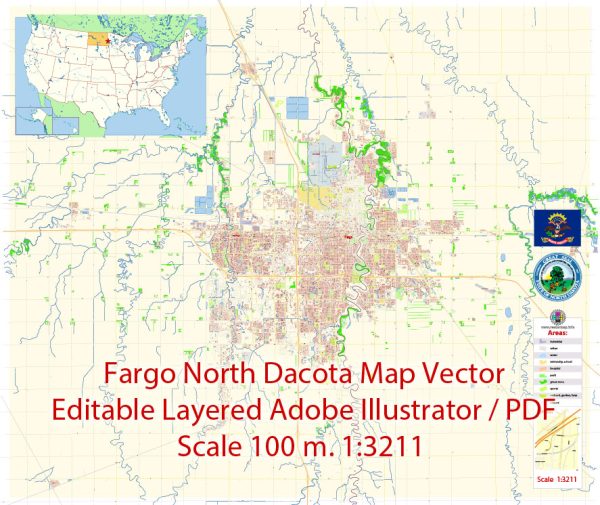Fargo, North Dakota, has a rich history that is closely tied to the development of the American frontier and the expansion of the United States westward. Here is a brief description of Fargo’s history:
- Native American Presence: Before European settlers arrived, the Fargo area was inhabited by various Native American tribes, including the Dakota and Ojibwe. These tribes had a long history in the region, relying on the Red River and its surrounding lands for sustenance and trade.
- Early Settlement: European-American settlement in the Fargo area began in the mid-19th century. The town was named after William Fargo, a director of the Northern Pacific Railway, which played a pivotal role in the city’s development. The railway reached Fargo in 1872, providing a significant boost to the city’s growth.
- The Railroad Era: The presence of the railroad transformed Fargo into a major transportation hub, facilitating the movement of people, goods, and agriculture. The city grew rapidly as a result, attracting immigrants and settlers from various backgrounds. Fargo became a central point for trade and commerce in the region.
- The Great Fire: In 1893, a massive fire swept through Fargo, destroying much of the city. However, the determined residents quickly rebuilt, and many of the new structures were made of brick and stone to prevent future fire devastation.
- Agricultural and Economic Growth: Fargo played a crucial role in the development of the Red River Valley as a prosperous agricultural region. The city served as a commercial center for wheat and other agricultural products, and the surrounding area became known for its fertile soil.
- Higher Education: North Dakota Agricultural College, which later became North Dakota State University (NDSU), was established in Fargo in 1890. The university has played a significant role in the city’s educational and cultural life.
- 20th Century and Beyond: Fargo continued to evolve as a thriving city in the 20th century, with further advancements in transportation, industry, and technology. It has weathered economic challenges, including the Great Depression, and has seen population growth over the years.
- Floods and Resilience: The Red River Valley, including Fargo, is prone to spring flooding. The city has experienced several major floods over the years, but its residents have shown remarkable resilience, working together to build extensive flood control systems to protect the community.
- Cultural and Economic Diversity: Fargo has become a diverse and culturally vibrant city. It is known for its thriving arts and music scene, as well as its welcoming atmosphere. The city has also attracted various industries, including technology and healthcare, which have contributed to its economic growth.
Today, Fargo stands as the largest city in North Dakota and continues to be a vital center for commerce, education, and culture in the region. Its history is marked by the perseverance of its residents and their ability to adapt to the changing times, making it a dynamic and enduring city in the American Midwest.


 Author: Kirill Shrayber, Ph.D.
Author: Kirill Shrayber, Ph.D.